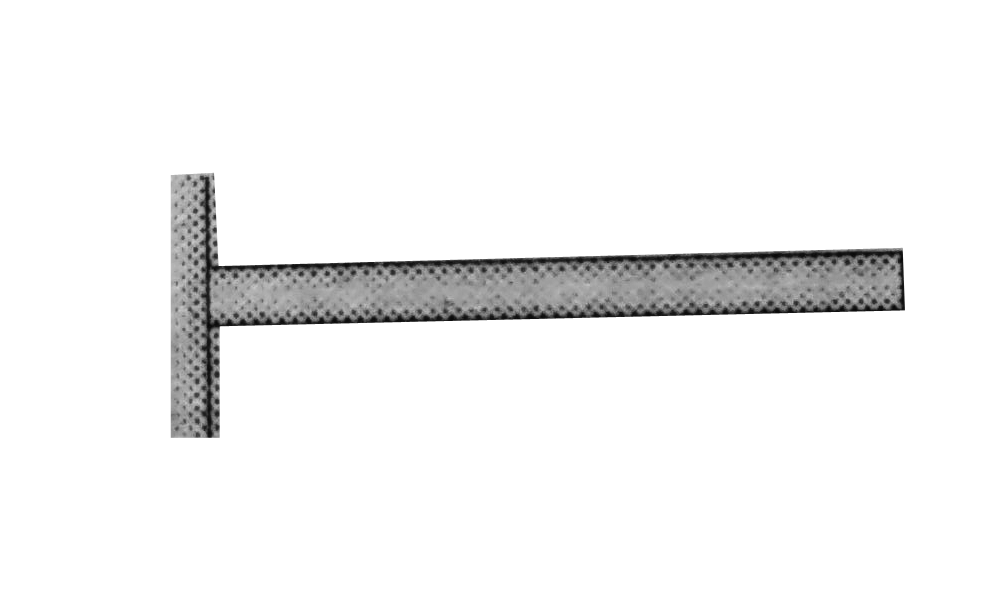When a wire is twisted, the strain produced in it is
Longitudinal
Volumetric
Shearing
None
The correct Answer is:C
To determine the type of strain produced when a wire is twisted, we can follow these steps:
1. Understanding the Problem:
- We need to identify the type of strain that occurs when a wire is twisted. The options we are considering are longitudinal strain, volumetric strain, and shear strain.
2. Visualizing the Wire:
- Imagine a wire with a cross-section. For clarity, let’s visualize the wire as having two faces: one at the top and one at the bottom.
3. Twisting the Wire:
- When we twist the wire, we fix one end and apply a torque to the other end. This action causes the wire to rotate, resulting in a change in the orientation of the cross-section.
4. Analyzing the Cross-Section:
- If we look at the cross-section of the wire before and after twisting, we can see that the top face of the wire rotates relative to the bottom face. This rotation creates an angle (let's call it θ) between the two faces.
5. Identifying the Type of Strain:
- In this scenario, we observe that:
- There is no change in the length of the wire (which would indicate longitudinal strain).
- There is no change in the volume of the wire (which would indicate volumetric strain).
- However, there is a change in the orientation of the faces of the wire due to the twisting motion, which is characteristic of shear strain.
6. Conclusion:
- Since the twisting of the wire results in a change in the angle between the faces without altering the volume or length, the strain produced is classified as shear strain.
Final Answer:
The strain produced when a wire is twisted is shear strain.
---
- We need to identify the type of strain that occurs when a wire is twisted. The options we are considering are longitudinal strain, volumetric strain, and shear strain.
- Imagine a wire with a cross-section. For clarity, let’s visualize the wire as having two faces: one at the top and one at the bottom.
- When we twist the wire, we fix one end and apply a torque to the other end. This action causes the wire to rotate, resulting in a change in the orientation of the cross-section.
- If we look at the cross-section of the wire before and after twisting, we can see that the top face of the wire rotates relative to the bottom face. This rotation creates an angle (let's call it θ) between the two faces.
- In this scenario, we observe that:
- There is no change in the length of the wire (which would indicate longitudinal strain).
- There is no change in the volume of the wire (which would indicate volumetric strain).
- However, there is a change in the orientation of the faces of the wire due to the twisting motion, which is characteristic of shear strain.
- Since the twisting of the wire results in a change in the angle between the faces without altering the volume or length, the strain produced is classified as shear strain.
The strain produced when a wire is twisted is shear strain.
Topper's Solved these Questions
- PROPERTIES OF MATTERBOOK - VMC MODULES ENGLISHCHAPTER - PROPERTIES OF MATTEREXERCISE - Level -2
50 Videos
- PROPERTIES OF MATTERBOOK - VMC MODULES ENGLISHCHAPTER - PROPERTIES OF MATTEREXERCISE - JEE Main (Archive) Level - 1
48 Videos
- PROPERTIES OF MATTERBOOK - VMC MODULES ENGLISHCHAPTER - PROPERTIES OF MATTEREXERCISE - JEE Advanced (Archive) Level - 2 (MATRIX MATCH TYPE)
1 Video
- MOVING CHARGES & MAGNETISM BOOK - VMC MODULES ENGLISHCHAPTER - MOVING CHARGES & MAGNETISM EXERCISE - IN-CHAPTER EXERCISE-K
10 Videos
- QUIZBOOK - VMC MODULES ENGLISHCHAPTER - QUIZEXERCISE - PHYSICS
30 Videos
Similar Questions
When a uniform metallic wire is stretched the lateral strain produced in it is β .if σ and Y are the Poisson's ratio and Young's modulus for wire, then elastic potential energy density of Wire is
View SolutionTwo steel wires of the same radius have their lengths in the ratio of 1:2. If they are stretched by the same force, then the strains produced in the two wires will be in the ratio of
View Solution
Knowledge Check
A spring is stretched by applying a load to its free end. The strain produced in the spring is
AvolumetricBshearClongitudinal and shearDlongitudinal.In the question number 11, the percentage strain produced in the rod is
AÂ 0.04%B0.0008CÂ 0.16%DÂ 0.24 %
State Hooke's law. A metallic wire of Young's modulus Y is stretched by suspending a load from it. If the linear strain produced in it is μ, obtain an expression for the elastic potential energy, in terms of Y and μ , stored in unit volume of the wire.
View SolutionA spring is stretched by applying a load to its free end. The strain produced in the spring is
View Solution
In the given figure, a rod is free at one end and other end is fixed. When we change the temperature of rod by Δθ, then strain produced in the rod will be
View Solution
In the given figure, a rod is free at one end and other end is fixed. When we change the temperature of rod by Δθ, then strain produced in the rod will be
View SolutionTwisted aestivation is found in :-
View SolutionA wire of cross section A is stretched horizontally between two clamps located 2lm apart. A weight Wkg is suspended from the mid-point of the wire. If the mid-point sags vertically through a distance x<l, the strain produced is
View Solution